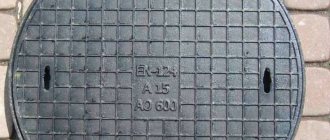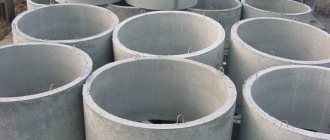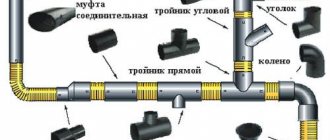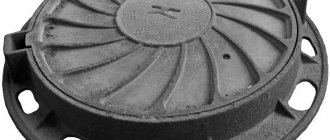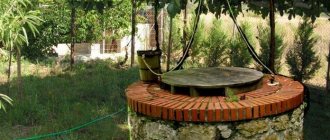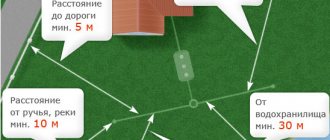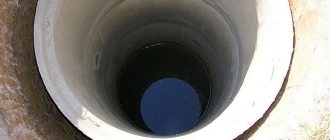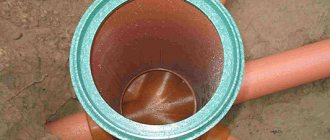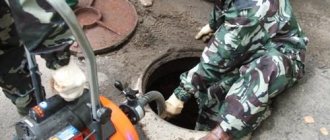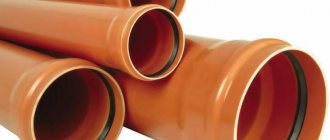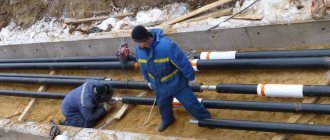A plastic sewer hatch is necessary to protect the sewage system from waste and debris, as well as to prevent possible damage and theft. One of the most common materials for the manufacture of such hatches is polymer.
The described products represent one of the important parts of the drainage structure. They are capable of withstanding an impressive load, sometimes up to 20 tons. With the help of such hatches it is possible to reduce the slipping of cars on the roads. Such products are installed in the garden plots of cottages, private houses and dachas, as well as on pedestrian sidewalks and in garden and park areas.
In the production process, a polymer-sand mixture is used. But special additives help improve the characteristics of the product. This includes water resistance, as well as long service life and frost resistance. And the appearance deserves attention. If cast iron products are unsightly and are presented in a traditional color, then polymer ones look more attractive and can have different shades, which allows the hatch to fit into the exterior.
Dimensions
A plastic sewer hatch usually has standard dimensions. This is due to the fact that the parameters of the wells are standard. The diameter of the hatch together with the frame is 80 cm. Its hole, like the lid, has a diameter of 62 cm. This is enough for a worker to get into the well to carry out technical work.
For underground wells, light, medium and heavy products are usually used. The size of their body is indicated by two parameters: diameter and height. When studying the dimensions, you should also pay attention to the size of the lid; it is also limited by diameter and height. Square polymer sewer manholes can bear up to 2 tons. The diameter and height of their body are 640x640 mm. As for the size of the lid, it is 600x600 mm.
But if the structure is capable of supporting up to 1 ton, then its dimensions can be 720 x 600 mm, which is true for the body, and 600x25 mm (diameter and height of the lid). On sale you can find another type of lightweight hatches that can withstand the weight of a car up to 2 tons. In this case, the dimensions of the case will be slightly larger, they are 75x90 mm. But in the case of the lid, the parameters reach 690x55 mm.
By purchasing light and medium hatches up to 5 and 15 tons, respectively, you become the owner of products with the following dimensions: 750x90 mm and 750x100 mm (body size), 690x55 mm and 690x50 mm (cover size). If you are interested in the size of polymer sewer manholes, then you should also pay attention to a product that can withstand up to 25 tons. Its dimensions are the largest and are equal to 800x110 mm (case size), 700x70 mm (lid size). Light hatches are installed with a recess ranging from 25 to 45 mm, while medium and heavy hatches are installed to a depth of 60 and 85 mm, respectively.
Dimensions of hatches with low load levels
If you are a private consumer, then most likely you will choose a small garden or green light hatch. In the first case, we are talking about a product that corresponds to load class A15. The surface can bear a weight of up to 1500 kg. The mass of such a product is 11 kg, it is ready to serve for about 50 years. The dimensions of such a small hatch are 540x540x80 mm.
By purchasing a green plastic lightweight hatch, you become the owner of a product with the same load class. The weight of the structure is 10 kg; the same load can be applied to its surface as in the case described above. Such a hatch is used for public gardens, parks and areas of local areas. The product is ready to last up to 20 years, and its dimensions are 750 x 750 x 80 mm.
Polymer sewer hatches with a lock are also on sale. These locking products belong to the same load class, their weight is 46 kg, but they are intended for park areas and pedestrian roads. The service life remains the same, but the dimensions change slightly: 780x789x110 mm. Polymer hatches are good because they fit perfectly into the interior of suburban areas. This is due to the appearance of the products, which can have a variety of colors, including:
- green;
- brown;
- grey;
- black.
Concrete
A concrete sewer hatch is used quite rarely. As a rule, the need for hatches made of this material arises in cases where the sewer well has a non-standard shape or size. In home sewer networks, concrete manholes are most often used to ensure the tightness of structures made using reinforced concrete rings. Since the mounting rim is also made of concrete, the structures fit well with each other.
For large networks, concrete manholes can also be used, but usually such cases arise when manholes are made in a non-standard shape. The hatch for such a system is made to order, in strict accordance with the project according to which the entire system is built.
Specifications
Among the main technical characteristics, the weight of the product should be highlighted. It was discussed above. Next you need to take into account the load class. This determines how much mass the surface of the structure can bear. This factor quite often plays a decisive role in the choice.
Polymer sewer hatches (GOST 3634-99) are designated by different letters that determine their purpose. For example, if you see the letter L in the marking, this means that this is a lightweight device with a rated load of 1.5 tons. Such products cannot be placed on the roadway.
But heavy structures and medium hatches are installed in driveways and parking lots. They can withstand loads of up to 25 tons. All characteristics are specified in state standards. In practice, you will be able to understand that cast iron hatches are also available for sale; their diameter can vary from 380 to 810 mm. As for plastic ones, this parameter starts from 315 mm, and the final value is 1 m.
Under certain conditions, it becomes necessary to install a rectangular hatch; one side of such a product is 300 mm. This value then increases in increments of 50 mm. But as for the maximum indicator, it reaches 800 mm.
Types of sewer wells
- Inspection - used to monitor the condition of the system, as well as clean the sewer. Installed: in places of turns and branches of the pipeline; in case of changes in the diameter and slope of sewer pipes; on straight sections.
- Filtration - for wastewater treatment.
- Rotary - installed in places where pipes turn, which avoids blockages.
- Differential - installed when there are large level differences between pipes.
- Storage - sealed containers for storing wastewater. Cleaned using a pump or a sewer machine.
The main purpose of sewer hatches is to prevent injuries, accidents and debris from getting inside. Also, if necessary, they serve for free access to underground communications for the purpose of control or repair.
For safety reasons, the sewer well must be closed. Hatch shapes are available in square, oval, rectangular, convex, and flat. There are no concave ones. The most common ones are round ones. In any position, the round lid will not fall inside. Ease of transportation is also important - you can roll it around.
In some American cities, there are triangular manholes that indicate the direction of water in the sewer. But due to their lack of safety, they are gradually being replaced with regular ones.
Sewer hatches, as a rule, are heavy, from 50 kg and above. This is necessary to prevent the hatch from opening on the roadway. All hatches, without exception, have a ribbed surface for greater traction with the surface of shoe soles and car tires.
Sometimes there are very interesting decorative markings on hatches. Which is of great interest to collectors from all over the world.
Various materials are used to make hatches, but the classic option is cast iron.
Main types of hatches based on material of manufacture
Sewage hatches made of cast iron, plastic, polymer and plastic are presented for sale in a wide range. As for cast iron products, they have increased strength and a long service life, which reaches 100 years. In most cases, such products are installed in areas with increased load on the structure, which includes roads and access roads. But in private areas such hatches are almost impossible to find, because there are no high demands on the strength of the products. In addition, such options are sometimes not so affordable.
Plastic hatches have become more popular because they have many advantages. Among others, an affordable price, as well as a wide range of models and a rich range of colors. The weight of such structures is insignificant, so they are very easy to install. The most suitable option for private households will be plastic hatches. But plastic structures are also good because they are not of interest to scrap metal collectors. The material does not rust, does not fade in the sun and remains resistant to moisture and ultraviolet radiation. These characteristics are characteristic of plastic hatches due to the fact that heat-resistant pigments and additives are added to the ingredients during the manufacturing process.
Compared to cast iron, plastic hatches are very light. And you can even install them on the lawn, where it will merge with the green mass of grass. Polymer-sand hatches are resistant to temperature changes, so they can be used in any climate zone. Their operating range is limited to -50 to +50 °C.
Why else should you choose a polymer sunroof?
The polymer sewer hatch, the characteristics of which are described in the article and should be studied by you before purchasing such a product, does not make a ringing sound when a car hits it. This is especially true for residential areas. Plastic hatches are also installed at gas stations. This is due to the fact that they do not spark when opening and closing, as well as when vehicles drive over their surface.
Cost of hatches
You now know the dimensions of polymer sewer manholes, but consumers are also interested in the cost. You can purchase a lightweight product with a slight height for 380 rubles. a piece. The weight of the lid and ring is 25 kg. But a lightweight high sewer manhole already costs 580 rubles, its weight together with the lid and ring will be 45 kg.
Classification by purpose
Marking in the form of a letter designation is applied to the sewer cover:
- water wells - “B”;
- sewerage - “K”;
- rain wells - “D”;
- heating network – “TS”;
- gas network - “GS”;
- main roads - “TM”;
- city cable network - "GKS";
- city telephone network - "GTS".
Designations of sewer hatches
Price for medium and reinforced hatches
The average product with a lid and ring included will weigh 52 kg, and its price is 650 rubles. The dimensions of polymer sewer manholes were mentioned in the article. Now you know what parameters a heavy product has. Additionally, it is only worth noting the weight, it is 57 kg, while you will have to pay 800 rubles for such a hatch. The reinforced polymer heavy hatch already costs 950 rubles, and its weight is 60 kg.
Work methodology
There must be a support ring between the well cover and the hatch. It will reduce the load on the slab several times. Instead of a ring, you can use brickwork, but over time it can collapse, which will cause the lid to fail.
A polymer sewer hatch, the price of which is acceptable for most consumers, is installed according to a specific algorithm. At the first stage, it involves leveling the ring horizontally using a level. This will distribute the load evenly. The structure should not be located on a slope, as this may cause subsidence and destruction of the device.
Features of installing sewer covers
Installation of a cast iron and polymer sewer hatch is carried out according to the same scheme. The difference is that the installation of a lighter polymer product will be performed by one person.
Work order:
Diagram of the main elements of the construction of a sewer well
- Gain access to the well neck. If necessary, remove the top soil in such a way that after installation the hatch does not protrude above the surface of the area. Recommended depth levels: 24–45 mm for light, 60 mm for medium, 85 and below for heavy models.
- Install a concrete support ring K60 or KTs01, which will reduce the load-bearing load on the slab. You can build brickwork, but it will not be durable enough. Over time, under the influence of precipitation, the bricks will begin to collapse, which will lead to deformation and failure of the entire structure.
- Install the shell without allowing a slope - this can lead to sagging of the hatch during operation. If necessary, install a sealant. Check with a level, secure firmly - the presence of grooves for fastening greatly simplifies this stage.
- Build formwork around the shell and fill it with concrete mortar. Allow to dry completely for 2-7 days.
- Lubricate the working surface of the ring with grease or lithol - this will prevent freezing at sub-zero temperatures.
- Place the cover on the hatch, check the opening, and lock it.
If the product does not fit well into the landscape, it can be disguised with decorative elements in the form of a boulder stone, stump, sign, statue or flower bed. This is not only an original exterior solution, but also additional protection. At the same time, the area should not be overloaded - access to the inspection well should be easy at any time of the year.
